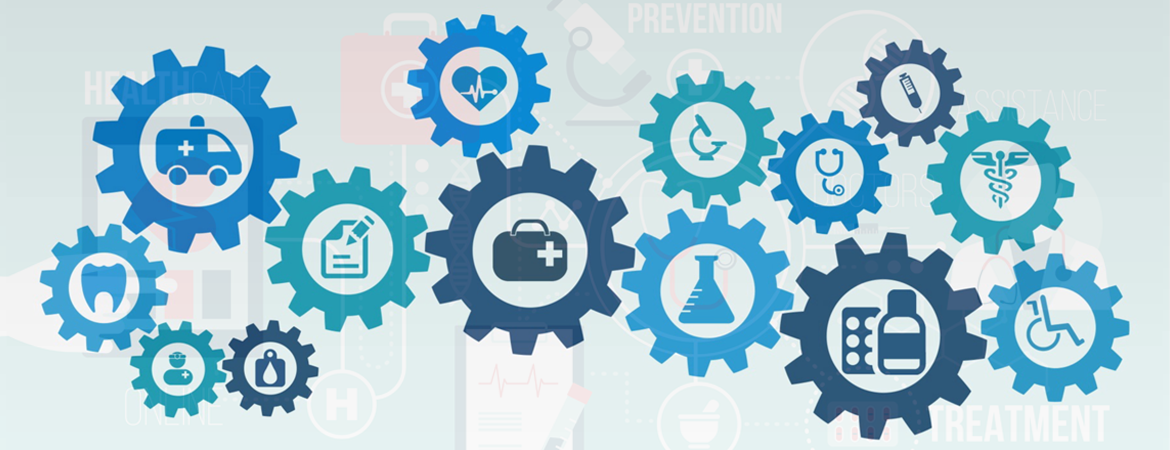Healthcare Device Integration
Integrating your medical device with EHRs and other health information systems can provide additional convenience and access to new data that can support value-based care models.
Interoperability Provides the Key to Value-Based Healthcare - Seamlessly combine continuous data (physiologic devices) with EHRs
Data derived from medical devices can be employed for decision making, both as part of the standard patient care management process of charting and bedside management, as well as in more acute care of patients. One such type of data that are used for more real-time intervention are alarm signals derived from medical devices based on measured limit threshold breaches. The communication of such alarm signals in large quantities to already overloaded staff can have a critical negative impact on patient safety. Thus, it is important to understand the implications of requirements on data delivery latency, response, sensitivity, specificity, and integrity.
Management complex web of data storage, integration and sharing in the form of patient data, Electronic Health Records (EHRs), LIS, RIS and Enterprise resource software
Unification of data can help improve a hospital's view of patient data. Meaningful use of data will break down barriers to the electronic exchange of information and allow operators to build effective interfaces between different systems from multiple vendors.
Our Solutions provides the following services:
Data integration is the key to unlocking the value of data. And, keeping in mind the massive increases in the data types, sources, and velocity of data collection in the healthcare industry, it is better to start data integration initiatives right now to assist your clinic in improving business processes, advancing care, and improving outcomes. Data Migration Assessment, Upgrades for Test and Production environments on any OS platform
Healthcare data integration services involve integrating teams, concepts, and technology to create the infrastructure capable of housing big data and using it in a meaningful way while addressing data accessibility, ownership, and privacy. Data aggregation and integration strategies depend largely on the legacy system used by a healthcare facility, its architecture, and the level of compliance with state-of-the-art standards.
Tier-1, Tier-2 and Tier-3 support services - Development and customization of HL7 interface design, and to develop the data integration tools supporting healthcare industry coding, meaningful data profiling and componentizing, support and training
End-to-end technology design and implementation services that integrate hardware, software, services, support and training for healthcare organizations with high-performance computing requirements - Designed to integrate and securely distribute valuable data that can cope with today's data challenges and deliver the agility necessary for your healthcare organization.
Integration design, build, configure, connect, install and maintain interfaces to Hospital systems, which maximizes performance and minimize defects - Our services involve integrating teams, concepts, and technology to create the infrastructure capable of housing big data and using it in a meaningful way while addressing data accessibility, ownership, and privacy. Data aggregation and integration strategies depend largely on the legacy system used by a healthcare facility, its architecture, and the level of compliance with state-of-the-art standards.
Project Management-project life cycle methodology to data integration assessing business requirements, functional/technical design, coding, testing, implementation and maintenance of integration components.
How Fortitech Team can help you?
Save your development time and resources by outsourcing your HL7/ASTM or Other Interface to our Solution. We provide all resources needed to build Uni-directional or Bi-directional HL7/ASTM interface from start to go live. Our solution cost-effective full interface services includes: integration software, system integration engineer assigned to your account, your Interface (from your system to your client HIS /EMR systems) documentation, interface Implementation, support and training with seamless transitioning from our integration team to yours.
Why Fortitech?
Technology, software and connected medical or biomedical devices must have one objective: helping to diagnose, supporting the physicians with their daily work and assisting exchanges with the patient - let's not forget that the patient must remain at the centre of the treatment and the doctors' focus. Guaranteed reliable identification and association between the patient and the equipment, without needing extra material. It's a real system of surveillance and risk and error management linked to identifying patients, getting rid of any identity-vigilance problem.













